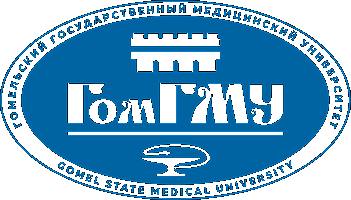| dc.contributor.author | Иванов, С. А. | |
| dc.contributor.author | Зиновкин, Д. А. | |
| dc.contributor.author | Хоров, О. Г. | |
| dc.contributor.author | Похожай, В. В. | |
| dc.contributor.author | Иванов, В. С. | |
| dc.date.accessioned | 2023-01-10T11:42:46Z | |
| dc.date.available | 2023-01-10T11:42:46Z | |
| dc.date.issued | 2022 | |
| dc.identifier.citation | Заживление раны при имплантации хрящевого аутографта и аллографта (экспериментальное исследование) / С. А. Иванов [и др.] // Проблемы здоровья и экологии. – 2022. – Т. 19, № 4. – С. 95–102. | ru_RU |
| dc.identifier.uri | http://elib.gsmu.by/handle/GomSMU/13700 | |
| dc.description.abstract | Цель исследования. Сравнить заживление раны при имплантации свежезамороженного хрящевого аллографта и хрящевого аутографта в ткани кожного лоскута. Материалы и методы. Исследованы 2 группы по 18 лабораторных беспородных белых крыс обоего пола массой 180–200 г. У каждой особи была сформирована модель пластического материала с включением кожного лоскута и хрящевого графта. В группе 1 использован собственный хрящ животного, в группе 2 — свежезамороженный аллогенный хрящ. Гистологическое исследование препаратов лоскута и графта проведено на 7-е, 14-е и 21-е сутки после вмешательства. Результаты. Выполнена полуколичественная оценка воспаления и тканевой реакции после имплантации хрящевого аутографта и аллографта. Отмечено постепенное снижение выраженности воспалительной реакции и формирование фиброзной капсулы вокруг импланта в течение периода исследования. При сравнительном анализе не выявлено статистически значимых различий по каждому из показателей. Заключение. Имплантация аллографта из свежезамороженного хряща не оказывает негативного влияния на заживление раны кожного лоскута в эксперименте. Свежезамороженный аллогенный хрящ может быть использован для реконструктивных вмешательств наравне с аутологичным материалом. | |
| dc.description.abstract | Objective. To compare the wound healing after implantation of the freshly frozen allogeneic cartilage and the autogenic cartilage in a cutaneous fl ap. Materials and methods. Two groups of eighteen non-breed white lab rats weighing 180-200 g of both genders were studied. Each specimen had a plastic material with the inclusion of a skin fl ap and cartilage graft formed. Group 1 used the animal’s own cartilage, group 2 used freshly frozen allogenic cartilage. Histological examination of the fl ap and graft preparations was carried out on the 7th, 14th and 21st days after the intervention.
Results. Semi-quantitative evaluation of infl ammation and tissue reaction after cartilage autograft and allograft implantation was carried out. A gradual decrease in the evidence of the infl ammatory reaction and the formation of a fi brous capsule around the implant during the study period was registered. The comparative analysis revealed no statistically signifi cant diff erences in each of the indicators. Conclusion. Implantation of an allograft from freshly frozen cartilage has no negative eff ect on skin fl ap wound healing in the experiment. Freshly frozen allogenic cartilage can be used for reconstructive interventions on a par with autologous material. | |
| dc.language.iso | ru | ru_RU |
| dc.publisher | ГомГМУ | ru_RU |
| dc.subject | рана | ru_RU |
| dc.subject | заживление | ru_RU |
| dc.subject | кожный лоскут | ru_RU |
| dc.subject | хрящевой аутографт | ru_RU |
| dc.subject | хрящевой аллографт | ru_RU |
| dc.subject | wound | ru_RU |
| dc.subject | healing | ru_RU |
| dc.subject | skin fl ap | ru_RU |
| dc.subject | freshly frozen cartilage allograft | ru_RU |
| dc.title | Заживление раны при имплантации хрящевого аутографта и аллографта (экспериментальное исследование) | ru_RU |
| dc.type | Article | ru_RU |
| dc.identifier.doi | https://doi.org/10.51523/2708-6011.2022-19-4-13 | |
